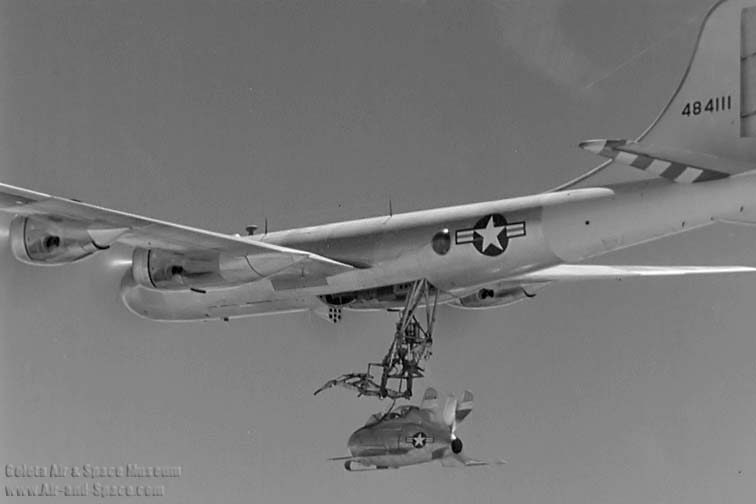DodgeLad
Skipped the Light Fandango
don't you miss the days we fought wars and actually tried to win them?
aye
don't you miss the days we fought wars and actually tried to win them?
B-29s were late in the war. Before that the Pacific was a mix of stuff but B-24s for heavies. They could not bomb Japan before the B-29s got out.
The whole plane is there!
If you're even kinda interested in aircraft, the USAF Museum at Wright Patterson AFB is a must see. Totally free, and completely worth the trip!
My grandpa was a crew chief on C40's and often fixed P38's during WWII. He "flew the hump" many times and said that as a crew chief he could do every thing a pilot could do, but he could also replace a fuel pump mid flight.
...and a Goblin parasite fighter..

Lord I had forgotten those horrid little things..........
[url="https://www.youtube.com/watch?v=TvmwfoyIZLQ"]XF85 "Goblin" - YouTube[/url][/quote]
Cool video!!
Not quite true - the Doolittle Raid bombed Japan with B-25s before the B-29s were there.
But that was for morale purposes (our side) and demoralizing purposes (their side), and a one-way, one-off mission. Not sure how those air crews managed to fit their huge brass pairs in those tiny bomber seats...
https://en.wikipedia.org/wiki/Doolittle_Raid
Two of the 80 Raiders are still alive today.
Not quite true - the Doolittle Raid bombed Japan with B-25s before the B-29s were there.
But that was for morale purposes (our side) and demoralizing purposes (their side), and a one-way, one-off mission. Not sure how those air crews managed to fit their huge brass pairs in those tiny bomber seats...
https://en.wikipedia.org/wiki/Doolittle_Raid
Two of the 80 Raiders are still alive today.
The Allison V12s were also used in PT boats in WW2. These boats though made of wood to keep weight down still displaced 8 tons fully loaded with armament. The allisons were not turbo supercharged for these applications. Each PT boat used 3 of these engines. They could go from a standing start to top speed of about 50 mph in approx 8 seconds. And burned about 100 gallons of fuel per hour per 10 hour tour. Thats pretty quick and thirsty for an 8 ton deep Vee boat.
Since these used AV gas it was delivered to PT boat bases in 55 gallon drums, and had to be transferred to the boats tanks via hand cranked pumps. Remember these boats burned 100 gallons per hour, and were usually at sea for 8-10 hour tours. The tanks held a reserve so your looking at about 1,200 gallons of fuel.
PT boats had to make a banzai run toward their intended target, get the torpedo (fish) props started then roll em off the side of the boat into the water headed towards the target, then they would turn away from the target and haul *** to get away hoping they dont get hit by enemy shells.
Theres lots lots more. I figured you would be interested in the powerplants and mechanical stuff first. Feel free to pick my brain for more. I love this stuff.
I have a bunch of model planes from WW2, I acquired them from a very nice Veteran at a Veteran's day rummage sale a few years ago.
They were free to me with the condition that i appreciate them and take care of them.
I figure the best way to appreciate any kind of vehicle is to know everything one can possibly know about it, so who can tell me everything about WW2 planes??
I want to know all about WW2 Tanks too if anyone knows a great bit about them.
There are a lot more than pictured but to give the idea
I live just about a mile down the road from Falcon Field here in Mesa. It's home to one of the CAF squadrons. There are a slew of aircraft located here. B17, B25, and a host of WWII fighters. They even have an operational F4 Phantom and a Mig17. Just the other day we were stopped at the light on the SE end of the runway when an F4F Helcat came in at low level across the Boeing parking lot and buzzed the runway. That plane was cooking right along

